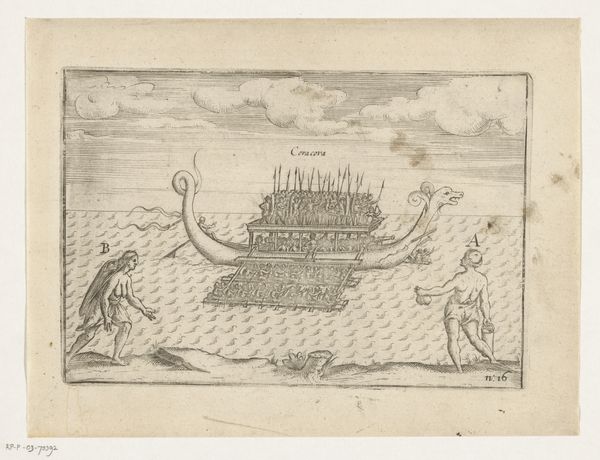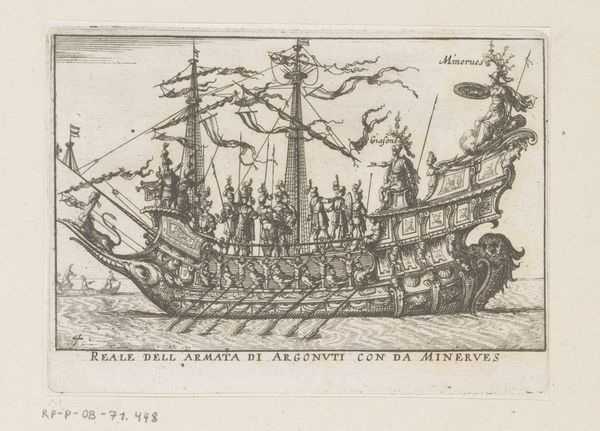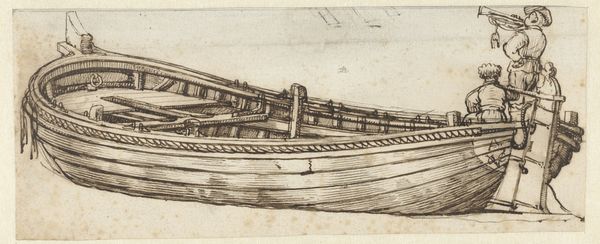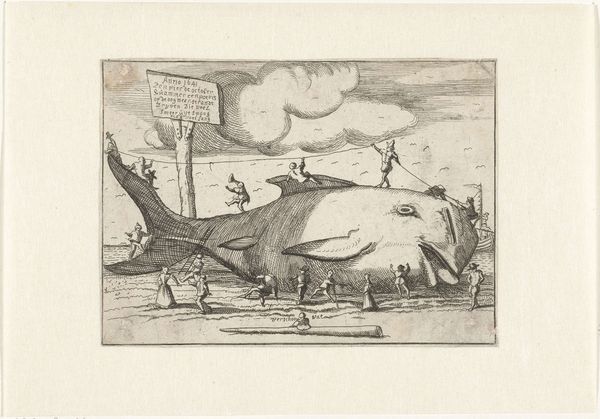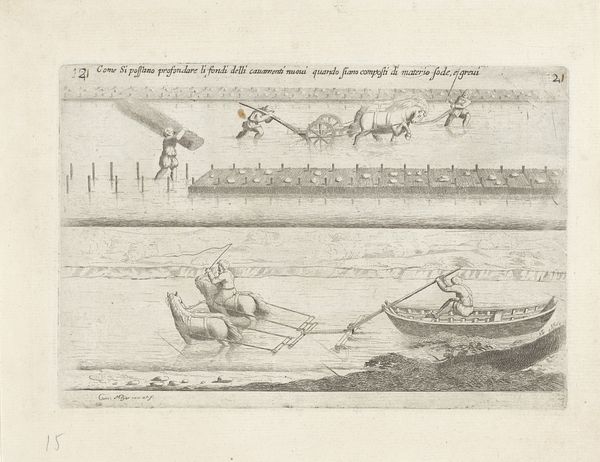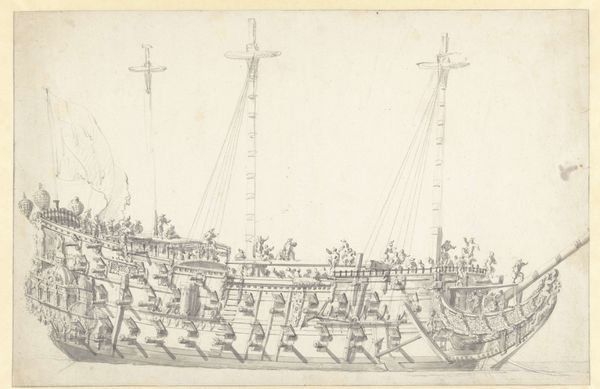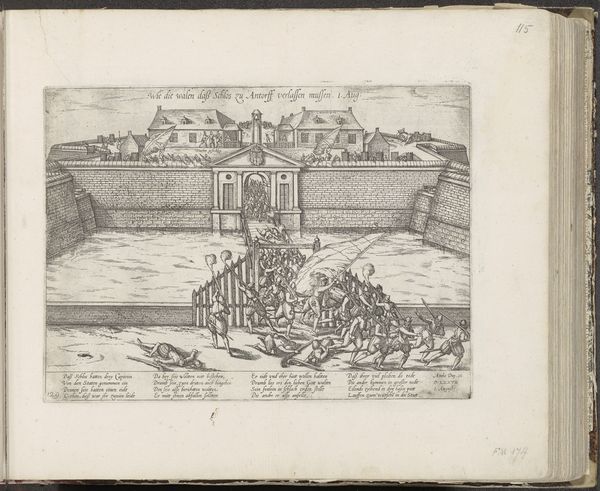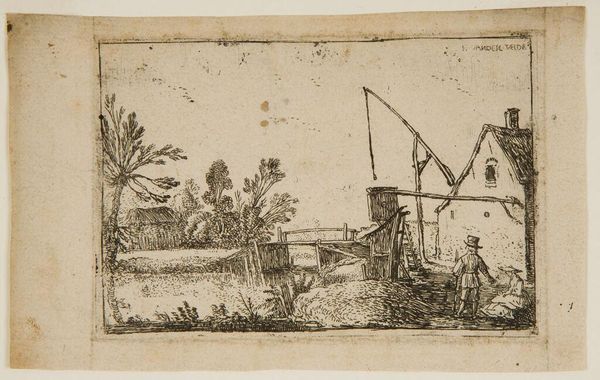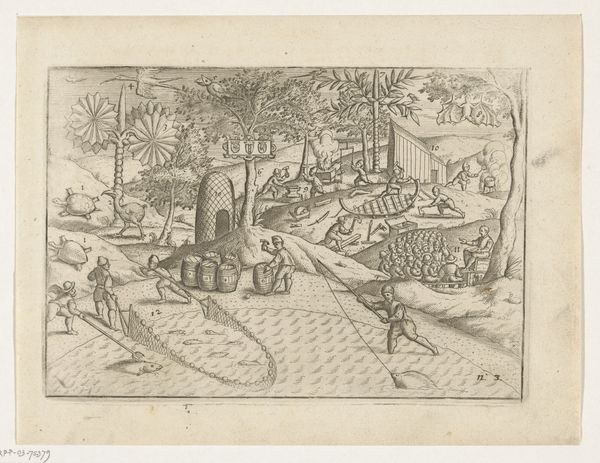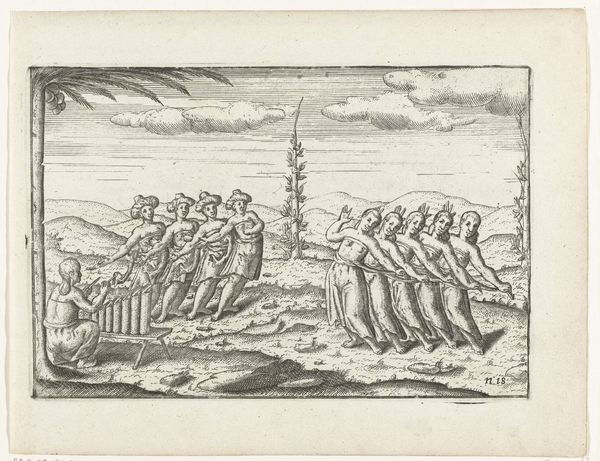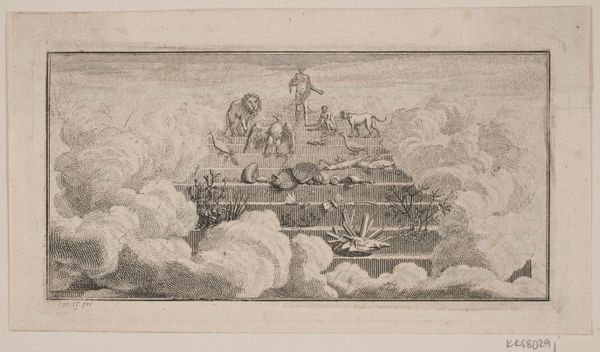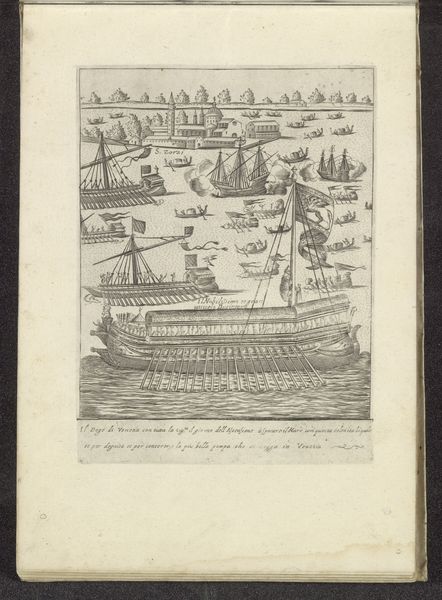
print, etching
#
narrative-art
#
baroque
# print
#
etching
#
figuration
#
line
Copyright: National Gallery of Art: CC0 1.0
Curator: Let’s turn our attention to this fascinating etching, “From Bizzarie di varie Figure,” created around 1624 by Giovanni Battista Bracelli. It’s a piece teeming with whimsical figures and dynamic energy. Editor: Oh, wow, it's got this otherworldly, almost dreamlike quality, doesn't it? Like something you’d see in a bizarre parade only visible at midnight. I'm instantly struck by the starkness of the figures against the light backdrop; a little creepy! Curator: Bracelli’s work often explored unconventional forms, and this piece really showcases that. The series, "Bizzarie di varie Figure", translates to "Various Figures of Bizarreness" – a key to understanding Bracelli’s intention of breaking artistic norms. It’s considered a product of its time, influenced by Mannerism while prefiguring Baroque extravagance. The figures lack idealization, offering a stark departure from Renaissance norms. It reflects the artistic uncertainties of its historical moment, with Europe on the brink of massive religious and political upheaval. Editor: Right? The figures feel elongated and slightly awkward, not striving for that classical perfection we're used to seeing. This imperfection is really striking. And the linear quality... the etching has a delicate strength; do you think that linear, minimal design could have been used to reflect that sense of historical uncertainty, the simplicity of stark truth? Curator: Absolutely. Bracelli uses line not just to define form but to convey mood and concept. The skeletal figures challenge power and beauty paradigms typical of Renaissance art; that’s where the real break with artistic convention and reflection of historic change occurs. One should question—through what cultural lenses do we judge what's ‘ideal’? Editor: Ah, yes. I wonder what a 17th-century viewer would make of the title though, considering today "bizarre" is often associated with something strange, something unwanted. It's also what makes the piece really charming for me. The composition is unique - playful - but not necessarily harmonious. I love that kind of push-and-pull dynamic; there's always tension, even in stillness. Curator: The use of “bizarre” highlights precisely that early Baroque desire to startle and provoke thought. A 17th-century viewer would likely be well-versed in classical traditions and find liberation in seeing a respected artist diverge to embrace the unique qualities of imaginative creation. Editor: That's fascinating. So, the real art isn't necessarily in the strokes themselves, but in Bracelli's permission to be unrestrained... like that's the radical part of all this. It's a nudge toward challenging existing expectations for beauty or value or any rules in artmaking at all. I think I like it even more, now! Curator: Yes, the print compels us to reevaluate our historical understanding of “beauty” and the very definition of representational freedom in art, thus opening the door to new dialogues in identity, gender, and social politics that reflect our own contemporary realities. Editor: Indeed. Thinking of it as an invitation for questioning has broadened my interpretation immensely, especially because art should be unsettling and liberating; otherwise, why make art, you know?
Comments
No comments
Be the first to comment and join the conversation on the ultimate creative platform.
